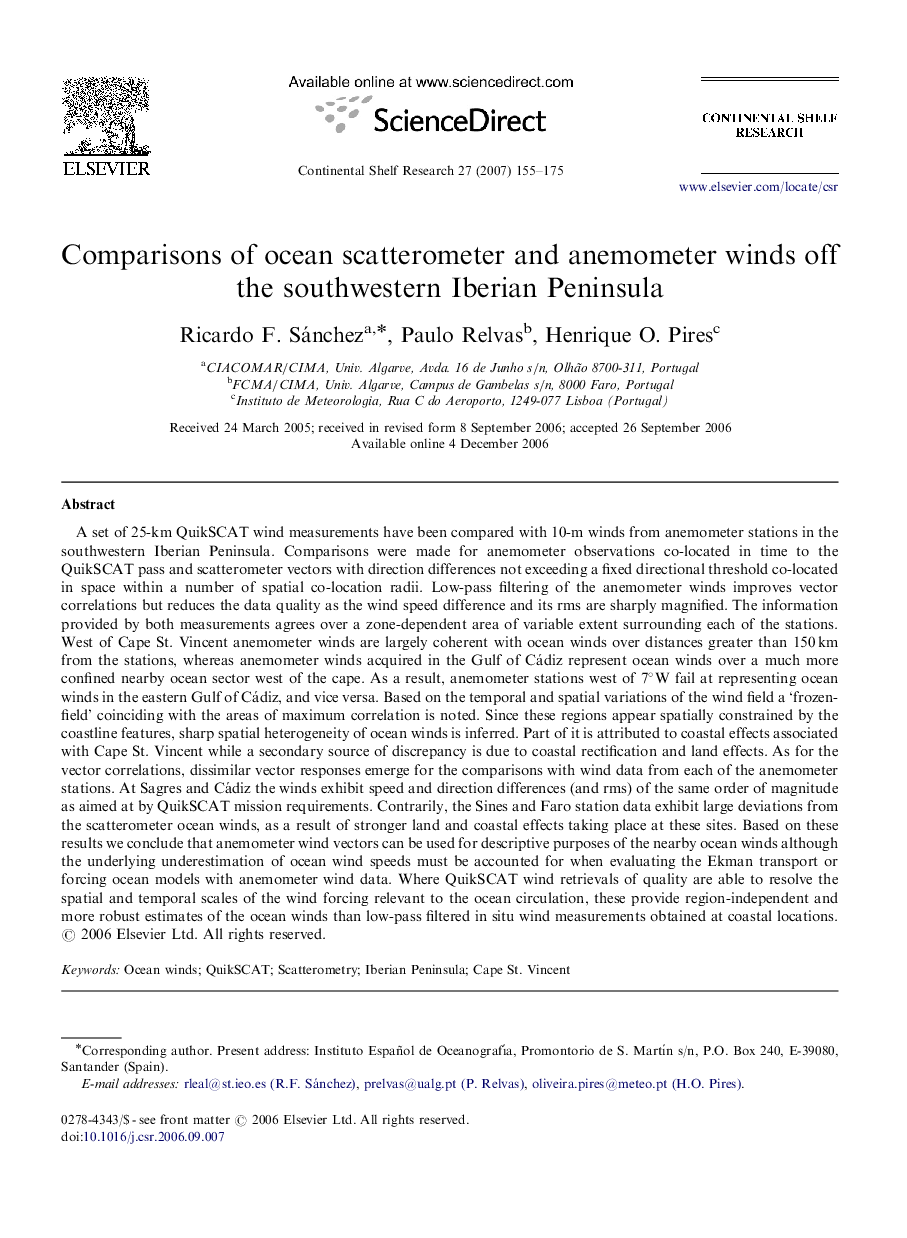| Article ID | Journal | Published Year | Pages | File Type |
|---|---|---|---|---|
| 4533544 | Continental Shelf Research | 2007 | 21 Pages |
Abstract
A set of 25-km QuikSCAT wind measurements have been compared with 10-m winds from anemometer stations in the southwestern Iberian Peninsula. Comparisons were made for anemometer observations co-located in time to the QuikSCAT pass and scatterometer vectors with direction differences not exceeding a fixed directional threshold co-located in space within a number of spatial co-location radii. Low-pass filtering of the anemometer winds improves vector correlations but reduces the data quality as the wind speed difference and its rms are sharply magnified. The information provided by both measurements agrees over a zone-dependent area of variable extent surrounding each of the stations. West of Cape St. Vincent anemometer winds are largely coherent with ocean winds over distances greater than 150Â km from the stations, whereas anemometer winds acquired in the Gulf of Cádiz represent ocean winds over a much more confined nearby ocean sector west of the cape. As a result, anemometer stations west of 7âW fail at representing ocean winds in the eastern Gulf of Cádiz, and vice versa. Based on the temporal and spatial variations of the wind field a 'frozen-field' coinciding with the areas of maximum correlation is noted. Since these regions appear spatially constrained by the coastline features, sharp spatial heterogeneity of ocean winds is inferred. Part of it is attributed to coastal effects associated with Cape St. Vincent while a secondary source of discrepancy is due to coastal rectification and land effects. As for the vector correlations, dissimilar vector responses emerge for the comparisons with wind data from each of the anemometer stations. At Sagres and Cádiz the winds exhibit speed and direction differences (and rms) of the same order of magnitude as aimed at by QuikSCAT mission requirements. Contrarily, the Sines and Faro station data exhibit large deviations from the scatterometer ocean winds, as a result of stronger land and coastal effects taking place at these sites. Based on these results we conclude that anemometer wind vectors can be used for descriptive purposes of the nearby ocean winds although the underlying underestimation of ocean wind speeds must be accounted for when evaluating the Ekman transport or forcing ocean models with anemometer wind data. Where QuikSCAT wind retrievals of quality are able to resolve the spatial and temporal scales of the wind forcing relevant to the ocean circulation, these provide region-independent and more robust estimates of the ocean winds than low-pass filtered in situ wind measurements obtained at coastal locations.
Related Topics
Physical Sciences and Engineering
Earth and Planetary Sciences
Geology
Authors
Ricardo F. Sánchez, Paulo Relvas, Henrique O. Pires,
